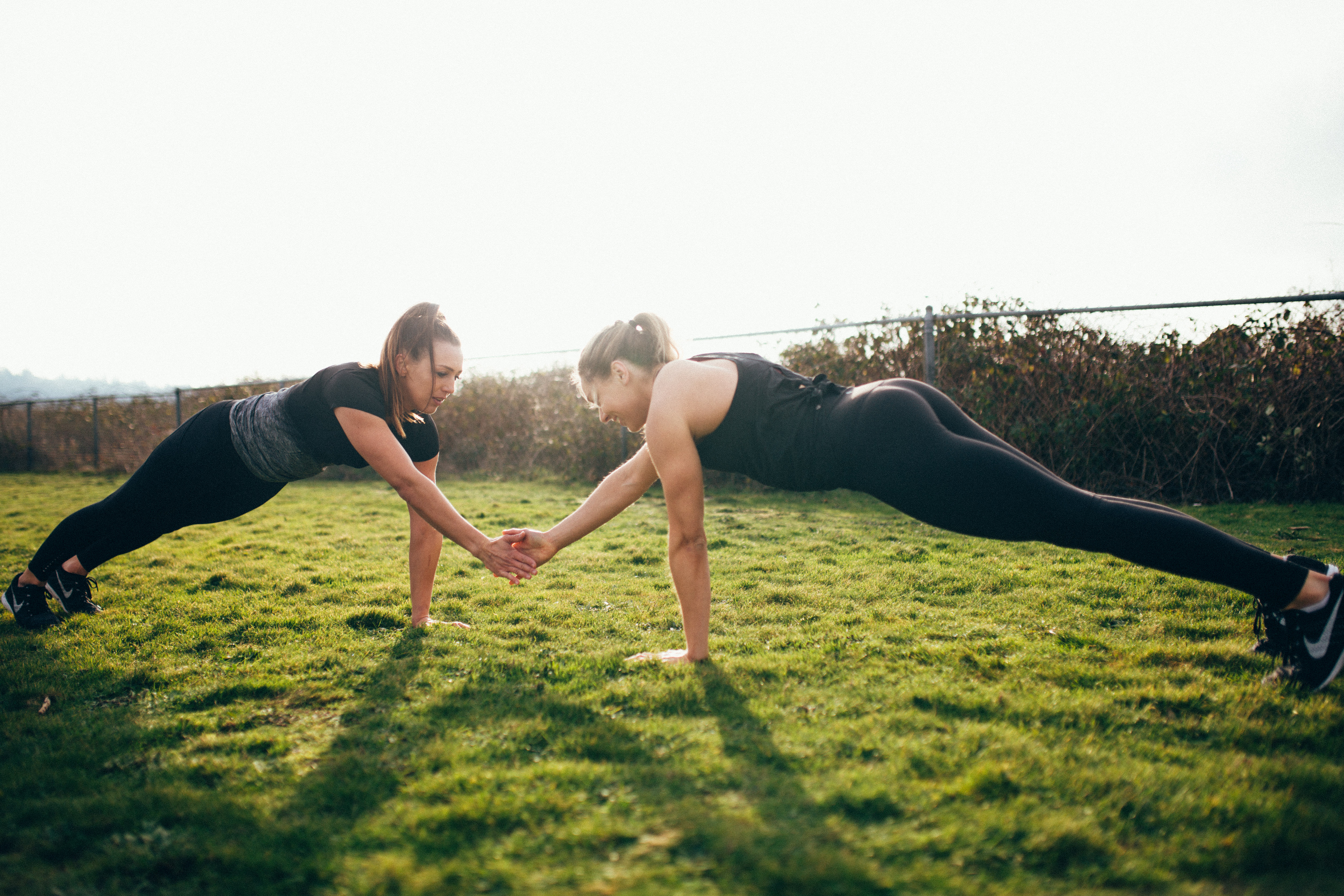If you go to Vie Athletics you’re going to have to plank. Similar to the way Mean Girls wear pink on Wednesday’s, we plank during a lot of workouts. It’s just part of the program. You don’t like planks? That is okay! Physical discomfort and working on movements are hard for all levels of athletes. Good news? We’ve got some tips for you on how to make planking and plank positions a little bit more enjoyable and a lot more beneficial, straight from the Vie Coaches Corner.
Planks are awesome! Really, they are. They’re an extremely beneficial move for the entire body and if science didn’t back us up on this one, we promise we wouldn’t do them. That being said? They’re not going anywhere anytime soon. Planks are one of the best ways to build stability and strength in your core. Doing any movement with proper form will always maximize the benefit of the movement.
“But there isn’t a whole lot of form involved, coach, you sort of just get into a plank position and suffer from there” Wrong.
Assuming a Plank Position with Poor Form Can Do More Damage Than Good
That being said, doing any physical movement with poor form will do more harm than good. For all intensive purposes, we’re just focusing on the plank for now. Holding a plank for too long (nobody needs to hold a plank for 5 minutes, honestly) can lead to extreme discomfort in the joints and increase unnecessary wear and tear on the body.
The biggest place people feel this tension is in the shoulder area which is a good indicator that the elbows aren’t directly beneath the body. Assuming this, the rest of the individual’s form has gone out the window. Meaning, the core either hasn’t been engaged or has become disengaged, causing the shoulder area to assume the strain that the core would be stabilizing the body for. Another cause for discomfort is placing the hips higher in the air, disengaging the core, and forcing gravity and body tension on the shoulders and elbow joints.
The other area that an individual may notice discomfort from improper form during a plank position is in the lower back. In this situation, an individual has likely disengaged the abdominal and core area by allowing the back to collapse. If you were to look in the mirror, you’d notice the core section sagging down towards the ground. Additionally, the body is no longer in line with itself.
How to Perform a Plank Correctly and Without Pain
The plank shouldn’t elude you due to poor form. It’s an awesome movement with plenty of benefits, even when done in short amounts of time. Chances are, it will be programmed at some point during the week. Hopefully, these tips will help you improve your form, benefit, and maybe even encourage you to embrace the burn when you find yourself in a plank position next.
Watch yourself in the mirror:
That’s the reason why those are there! Ah ha! Whether you’re on the bench, on your knees, or on your elbows in either a low or high plank, the mirror comes in handy. Check out your form in your reflection and see if you are doing it correctly. Form Tips – look for your elbows to be under your body, not out in front. Aim to have your body in one solid line with your core section engaged (booty not in the air, stomach not sinking towards the floor).
Breathe:
You’ve probably heard your Vie Coach say it a million times during core work “DON’T FORGET TO BREATHEEEEE!!!!”. This is an important reminder you should start taking advantage of. In a plank position, this can be used to your benefit – create a consistent breathing flow helps the mind take the focus off of the tension and stress and relax it a bit. Find your happy place and breathe yourself all the way there. The minute of plank holding will be over in no time.
Belly Button Thoughts:
What? Thinking about your belly button during planks is a nice little trick to keep your core engaged. Think about bringing your belly button to your spine. You’ll notice that your back flattens out and your hips tuck creating proper posture. Reap the most benefit of abdominal movements when you do this, planking or otherwise.
Prayer Pose:
At the bottom of your plank position place your hands in a prayer position. Think about touching your fingertips together. Your hands can be grasped or parallel, engaging the upper part of your abdominal region. Your chest muscles, your deltoids, and your lats should be active. When you use more muscles than just a few, you not only get stronger, but the movement feels a little bit ‘easier’.

To Plank or Not to Plank, That is the Question…
Lastly, the plank position burns tons of calories. Planking is easier on the back than traditional crunches, can strengthen the lumbar and core section to prevent injuries, and can be done pretty much anywhere! While holding a plank position isn’t always about how long you can hold it, it’s important to know that the benefit of the position comes from how long you can hold with good form.
Say you have an entire minute to hold a plank – we’d rather see you holding that plank with good form, taking a quick break on your knees, then popping back up into the plank position rather than compromising form and holding the position for the full minute. Most importantly? Listen to your body, don’t hold your breath. If you need to move from the floor to the bench or vice-versa, we support your judgment.
Plank on, Vie Girls!
With Love,
Vie
Are Abs Really Made In The Kitchen? Read More By Clicking HERE
next up
go back
